 |
DEMAND, SUPPLY AND EQUILIBRIUM (CONTINUED……..):Equilibrium |
| << DEMAND, SUPPLY AND EQUILIBRIUM (CONTINUED……..) |
| ELASTICITIES:Price Elasticity of Demand, Point Elasticity, Arc Elasticity >> |
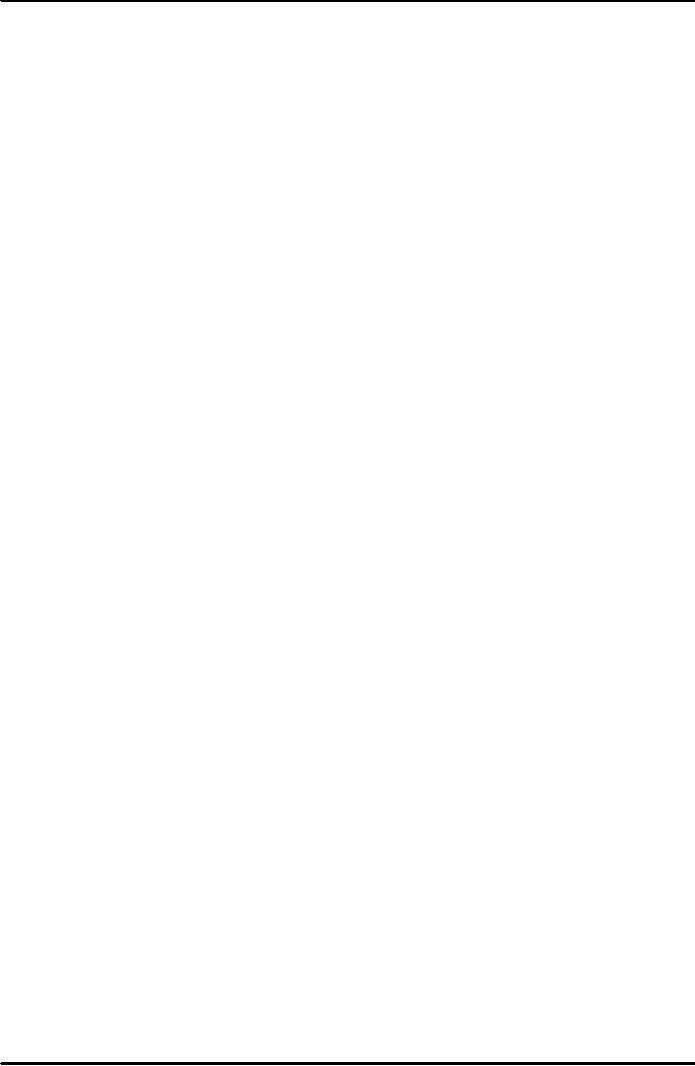
Introduction
to Economics ECO401
VU
Lesson
2.3
DEMAND,
SUPPLY AND EQUILIBRIUM
(CONTINUED........)
Equilibrium:
Equilibrium
is a state in which there
are no shortages and
surpluses; in other words
the
quantity
demanded is equal to the
quantity supplied.
Equilibrium
price is the price
prevailing at the point of
intersection of the demand
and supply
curves;
in other words, it is the
price at which the quantity
demanded is equal to the
quantity
supplied.
Equilibrium
quantity is the quantity
that clears the market; in
other words, it is it is the
quantity
at
which the quantity demand is
equal to the quantity
supplied.
Algebraic
Representation of Equilibrium:
If
we have following demand and
supply functions,
Qd
= 100 10 P
Qs
= 40 + 20 P
In
equilibrium,
Qd
= Qs
Therefore
100
- 10P = 40 + 20P
20P
+ 10P = 100 - 40
30P
= 60
P
= 60/30
P=2
Putting
the value of price in any of
demand and supply
equation,
Q
= 100 10x2 (or 40 +
20x2)
Q
= 100 20
Q
= 80
The
equilibrium price is 2 and
the equilibrium quantity is
80.
Equilibrium
can shift if:
�
Demand
Curve Shifts.
�
Supply
Curve Shifts.
�
Both
Shift.
This
gives rise to eight
possibilities. These eight
possibilities can be summarized as
following:
D
,
S ~,
P
Q
D~,S
,
P
Q
D
,S
,
P?
Q
D
,S~,
P
Q
D~,S
,
P
Q
D
,S
,
P
Q?
D
,S
,
P
Q?
D
,S
,
P?
Q
11
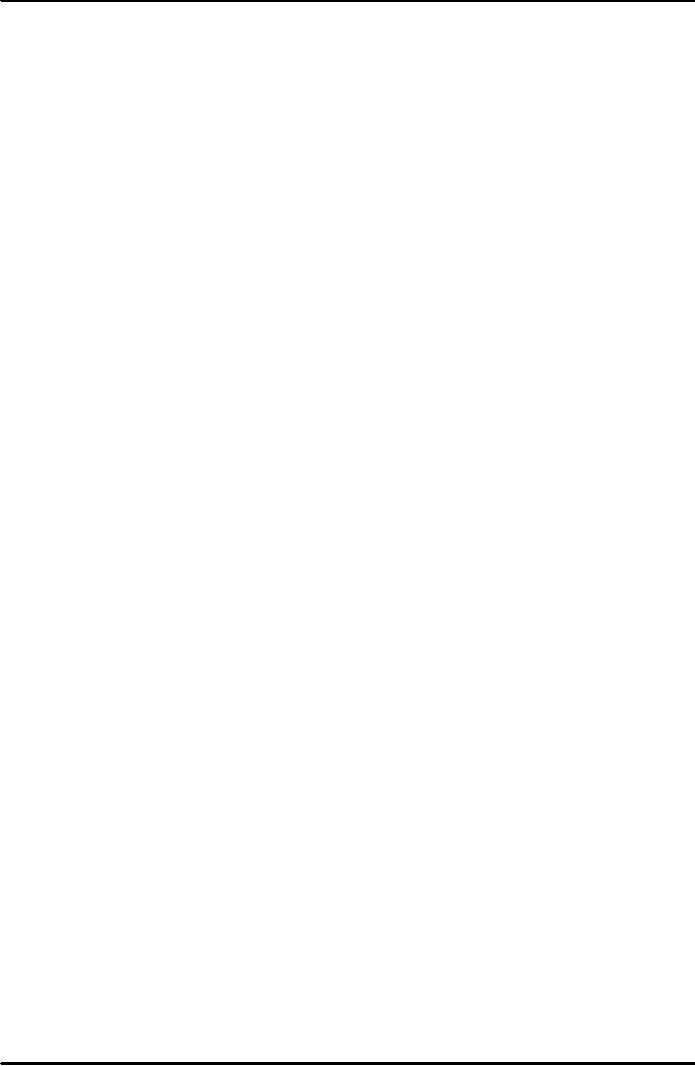
Introduction
to Economics ECO401
VU
The
symbol " "
or
"
"
shows
increase and the symbol "
"
and "
"
shows a
decrease
while
the symbol "~"
shows
that the particular thing
remains same.
Government
and Price-Determination:
The
government may intervene in
the market and mandate a
maximum price (price
ceiling) or
minimum
price (price floor) for a
good or service.
A
price ceiling is the maximum
price limit that the
government sets to ensure
that prices don't
rise
above that limit (medicines
for e.g.).
A
price floor is the minimum
price that a Government sets
to support a desired commodity
or
service
in a society (wages for
e.g.).
Social
cost is the cost of an
economic decision, whether
private or public, borne by
the society
as
a whole.
Marginal
social cost is the change in
social costs caused by a
unit change in
output.
12
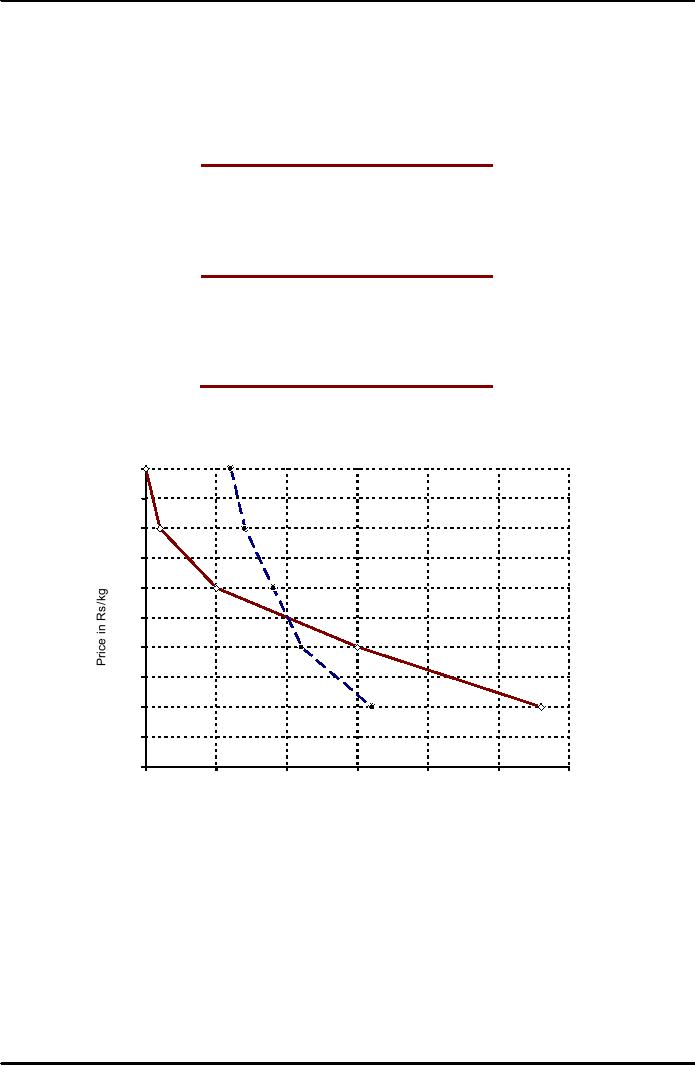
Introduction
to Economics ECO401
VU
END
OF UNIT 2 - Exercises
Asif
and Aasia's "monthly" demand
schedules for potatoes are
given. Roughly
draw
these
demand schedules on the same
graph. Assume that there
are 200 consumers in
the
market.
Of these, 100 have schedules
like Asif's and 100
have schedules like
Aasia's.
Complete
the Total market demand
("monthly") column in the
table below?
Price
Asif
Aasia
Total
market
demand
(pence
(Qd
in
(Qd
in
(kg)
per
kg)
kg)
kg)
20
28
16
4400
40
15
11
2600
60
5
9
1400
80
1
7
800
100
0
6
600
100
90
80
70
60
50
40
Asif's
30
demand
Aasia's
20
demand
10
0
0
5
10
15
20
25
30
Quantity
demanded (kg per
month)
Assuming
that demand does not
change from month to month,
how would you plot
the
annual
market demand for
potatoes?
The
amount demanded would be 12
times higher at each price.
If the scale of the
horizontal
axis
were unaltered, the curve
would shift way out to
the right. A simple way of
showing the new
curve,
therefore, would be to compress
the scale of the horizontal
axis. (If each of the
numbers
on
the axis were multiplied by
12, the curve would
remain in physically the
same position.)
At
what price is their demand
the same?
The
two curves cross at a price
of Rs50 per kg and at a
demand of 10 kg per
month.
13
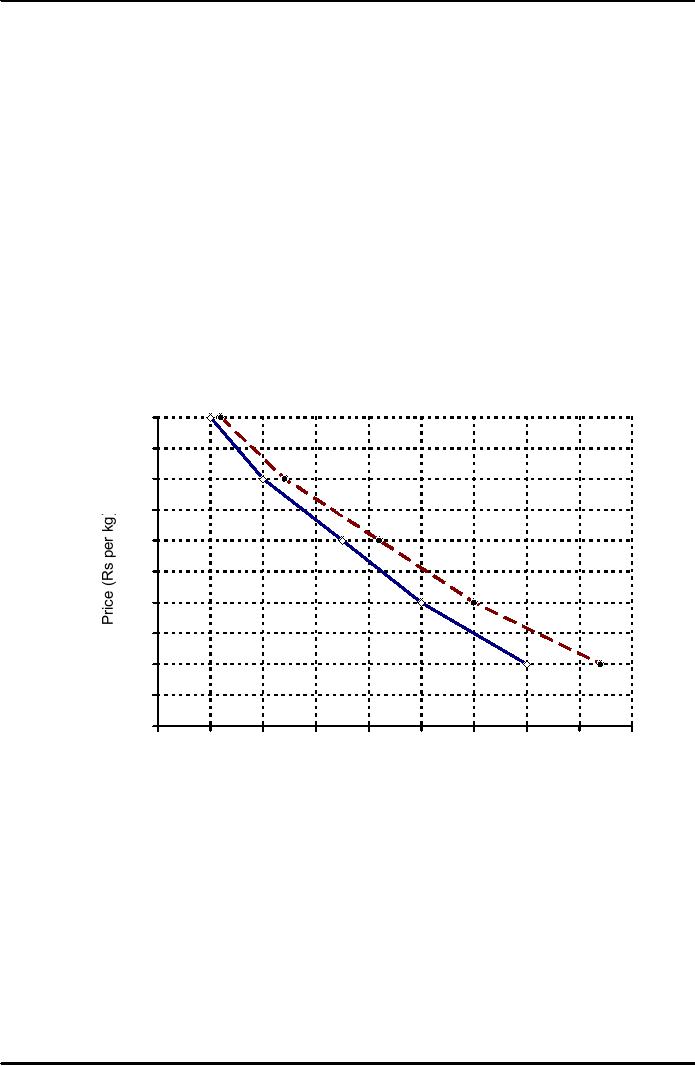
Introduction
to Economics ECO401
VU
What
explanations could there be
for the quite different
shapes of their two
demand
curves?
One
explanation could be that
Asif is quite happy to eat
rice, pasta or bread instead
of potatoes.
Thus
when the price of potatoes
goes up she switches to
these other foods, and
switches to
potatoes
when the price of potatoes
comes down. Aasia, by
contrast, may not see
these other
foods
as close substitutes and
thus her demand for
potatoes will be less price
sensitive.
Do
all these the determinants
of demand affect both an
individual's demand and
the
market
demand for a
product?
All
except the distribution of
income in the
economy.
You
are given a market demand
curve for apples. Assume
that the price of
apples
increases
by 20 per cent at each price
due, say, to substantial
increases in the prices
of
other
substitute fruits. Plot the
new demand curve for
apples. Is the new curve
parallel
to
the old one?
See
below. As you can see,
the curves are not
parallel. A constant percentage
increase in
quantity
demanded gives a bigger and
bigger absolute increase as
quantity increases.
100
90
80
70
60
50
40
New
30
demand
20
Old
demand
10
0
0
100
200
300
400
500
600
700
800
900
Quantity
demanded (kg per
month)
The
price of lamb meat rises
and yet it is observed that
the sales of lamb meat
increase.
Does
this mean that the
demand curve for lamb
meat is upward sloping?
Explain.
No
not necessarily. For
example, the price of
substitutes such as beef or
chicken may have
risen
by a larger amount. In such
cases the demand curve
for lamb meat will
have shifted to the
right.
Thus although a rise in the
price of lamb meat will
cause a movement up along
this new
demand
curve, more lamb meat
will nevertheless be demanded
because lamb meat is
now
relatively
cheaper than the
alternatives.
A
demand function is given by
Qd = 10000 200P. Draw
this in P-Qd
space.
What is it
about
the demand function
equation that makes
the demand curve in P-
Qd space
(a)
downward sloping; (b) a
straight line?
14
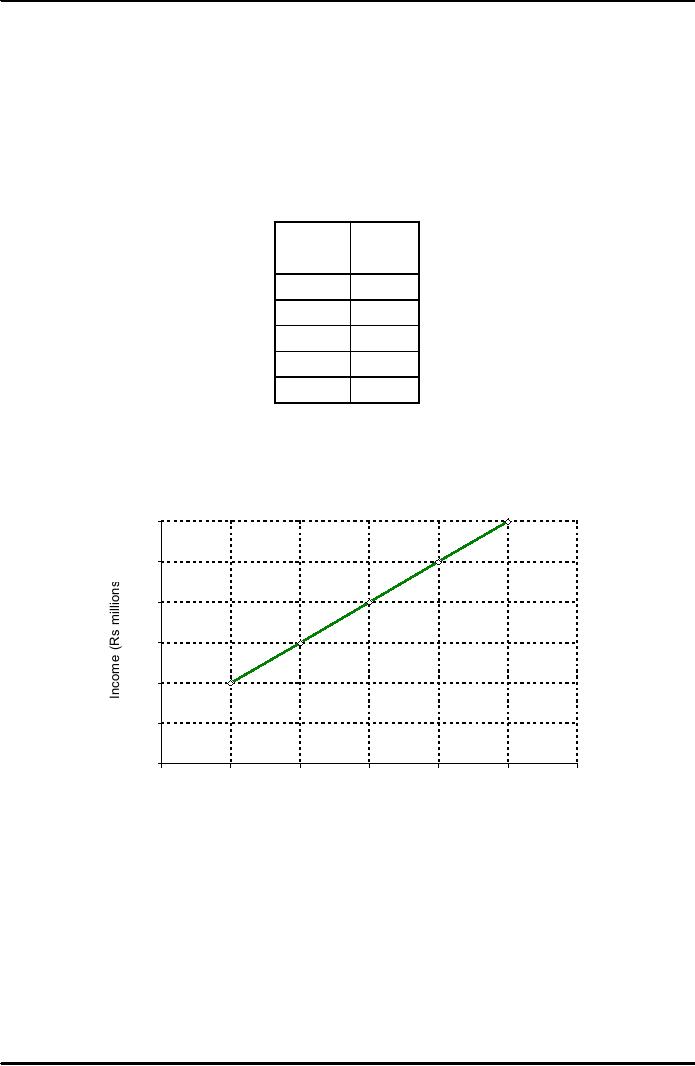
Introduction
to Economics ECO401
VU
a)
The fact is that the
200P term has a negative
sign attached to it. This
means that as P
rises,
Qd falls.
b)
The fact is that there is no
P to a power term. The
demand curve thus has a
constant
slope
of 1/200.
A
demand function is given by
Qd =
a + bY, where Y is total income. If
the term "a" has
a
value
of 50 000 and the term
"b" a value of 0.001,
construct a demand schedule
with
respect
to Y. Do this for incomes
between Rs100 million and
Rs300 million at
Rs50
million
intervals.
Y
(in Rs
Qd (in
millions)
000s)
100
50
150
100
200
150
250
200
300
250
Now
use this schedule to plot a
demand curve with respect to
income. Comment on
its
shape.
The
curve will be an upward-sloping
straight line, crossing the
horizontal axis at 50 000.
It
would
rise by 100 000 units
for each Rs100 million
rise in income.
300
Demand
250
200
150
100
50
0
0
50
100
150
200
250
300
Quantity
demanded
Market
dem and (with respec t to
incom e)
What
are the reasons which
cause the market supply of
potatoes to fall?
Examples
include:
�
The
cost of producing potatoes
rises.
�
The
profitability of alternative crops
(e.g. carrots) rises.
�
A
poor potato harvest.
�
Farmers
expect the price of potatoes
to rise (short-run supply
falls).
For
what reasons might the
supply of leather
rise?
Examples
include:
15
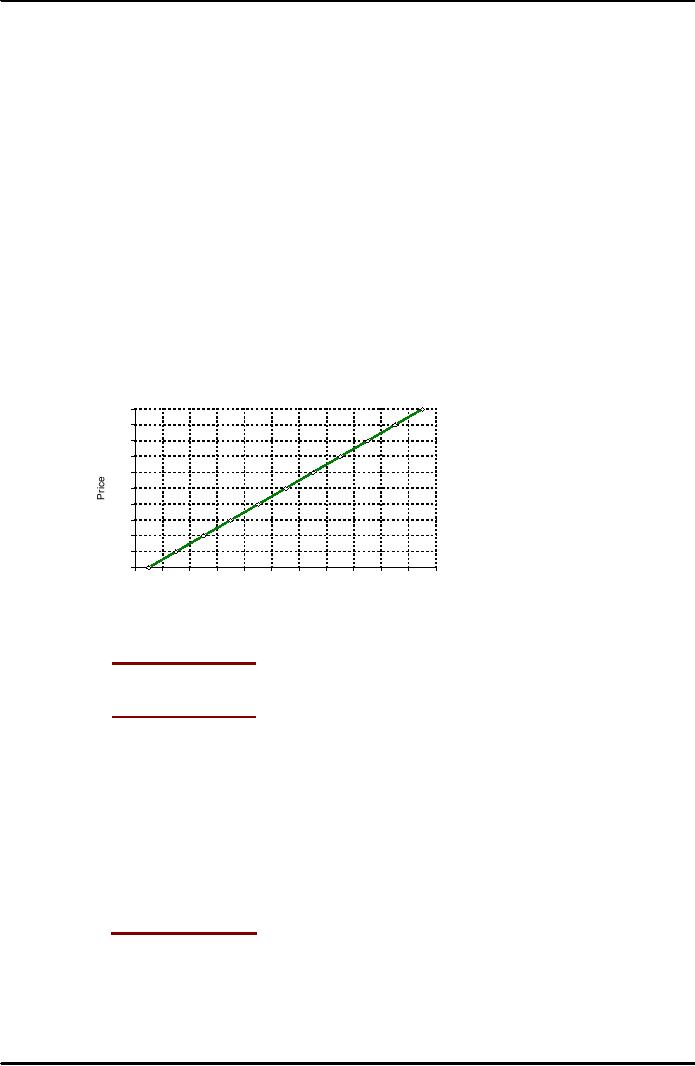
Introduction
to Economics ECO401
VU
�
The
cost of producing leather
falls.
�
The
profitability of producing mutton
and chicken
decreases.
�
The
price of beef rises (goods
in joint supply).
�
A
long-running industrial dispute
involving leather workers is
resolved.
�
Producers
expect the price of leather
to fall (short-run supply
increases).
This
question is concerned with
the supply of gas for
home and office heating in
winters.
In
each case consider whether
there is a movement along
the supply curve (and in
which
direction)
or a shift in it (left or right).
(a) New gas fields
start up in production. (b)
The
demand
for home heating rises.
(c) The price of electric
heating falls. (d) The
demand for
CNG
for cars (produced in joint
supply) rises. (e) New
technology decreases the
costs of
gas
production.
(a)
Shift right. (b) Movement up
along (as a result of a rise
in price). (c) Movement down
along
(as
a result of a fall in price
resulting from a fall in
demand as people switch to
electric heating).
(d)
Shift right (more of a good
in joint supply is produced).
(e) Shift right.
A
supply function is given as
Qs =
c + dP, where "c" is 500 and
"d" is 1000. Draw
the
schedule
(table) and graph for
equation for prices from
Rs1 to Rs10. What is it in
the
equation
that determines the slope of
the supply
`curve'?
10
9
Supply
8
7
6
5
4
3
2
1
0
0
2
000
4
000
6000
8000
100
00
Q
u antity supp lie d
P
(in
Qs
Rs)
(units)
1
1500
2
2500
3
3500
4
4500
5
5500
6
6500
7
7500
8
8500
9
9500
10
10500
The
graph is an upward sloping
straight line crossing the
horizontal axis at 500
units. The slope
is
given by the value of the d
term: i.e. the slope is
1/1000 (for every Re1
increase in price,
quantity
supplied increases by 1000
units).
16
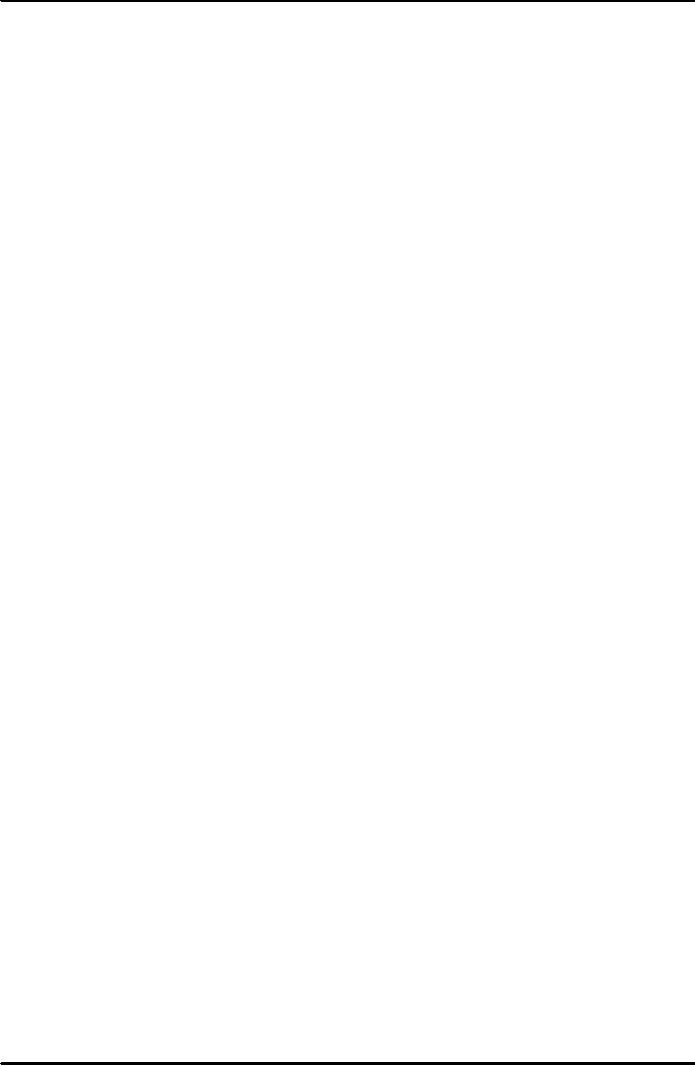
Introduction
to Economics ECO401
VU
Explain
the process by which the
price of houses would rise
if there were a
shortage.
People
with houses to sell would
ask a higher price than
previous sellers of similar
houses
(probably
with the advice of an estate
agent). Potential purchasers
would be prepared to pay
a
higher
price than previously in
order to obtain the type of
house they wanted.
With
a typical upward sloping
market supply curve and
downward sloping
market
demand
curve, what would happen to
equilibrium price and
quantity if the demand
curve
shifted
to the left?
Both
price and quantity will
fall. You should be able to
label two demand curves
(e.g. D1 and
D2),
two equilibrium points (e.g.
e1 and e2) corresponding
prices Pe2 and Pe1
(Pe2 <
Pe1), and
quantities
Qe2 and Qe1
(Qe2 >
Qe1).
What
will happen to the
equilibrium price and
quantity of butter in each of
the following
cases?
You should state whether
demand or supply (or both)
have shifted and in
which
direction.
(In each case assume
ceteris paribus.)
(a)
A rise in the price of
margarine; (b) A rise in the
demand for yoghurt; (c) A
rise in the
price
of bread; (d) A rise in the
demand for bread; (e) An
expected rise in the price
of
butter
in the near future; (f) A
tax on butter production;
(g) The invention of a new,
but
expensive,
process for removing all
cholesterol from butter plus
the passing of a
law
which
states that all butter
producers must use this
process.
a)
Price rises, quantity rises
(demand shifts to the right:
butter and margarine
are
substitutes).
b)
Price falls, quantity rises
(supply shifts to the right:
butter and yoghurt are in
joint supply).
c)
Price falls, quantity falls
(demand shifts to the left:
bread and butter are
complementary
goods).
d)
Price rises, quantity rises
(demand shifts to the right:
bread and butter
are
complementary
goods).
e)
Price rises, quantity rises
or falls depending on relative
sizes of the shifts in
demand and
supply
(demand shifts to the right
as people buy now before
the price rises; supply
shifts
to
the left as producers hold
back stocks until the
price does rise).
f)Price
rises, quantity falls
(supply shifts to the
left).
g)
Price rises, quantity rises
or falls depending on the
relative size of the shifts
in demand
and
supply (demand shifts to the
right as more health-conscious
people start buying
butter;
supply shifts to the left as
a result of the increased
cost of production).
Are
there any factors on the
supply side that influence
house prices?
Yes.
Although they are usually
less important than
demand-side factors, they
are, nevertheless
important
in determining changes in house
prices. The two most
important are the
expectations
of
the construction industry. If
house building firms
(contractors) are confident
that demand will
continue
to rise, and with it house
prices, they are likely to
start building more houses.
The
resulting
increase in the supply of
houses (after the time
taken to build them) will
help to dampen
the
rise in prices.
The
other major supply-side
factor is the expectations of
house owners. If people
think that
prices
will rise in the near
future and are thinking of
selling their house, they
are likely to delay
selling
and wait until prices
have risen. This (temporary)
reduction in supply will
help to push up
prices
even further.
Draw
a supply and demand diagram
with the price of labour
(the wage rate) on
the
vertical
axis and the quantity of
labour (the number of
workers) on the horizontal
axis.
What
will happen to employment if
the government raises wages
from the equilibrium
to
some
minimum wage above the
equilibrium?
17
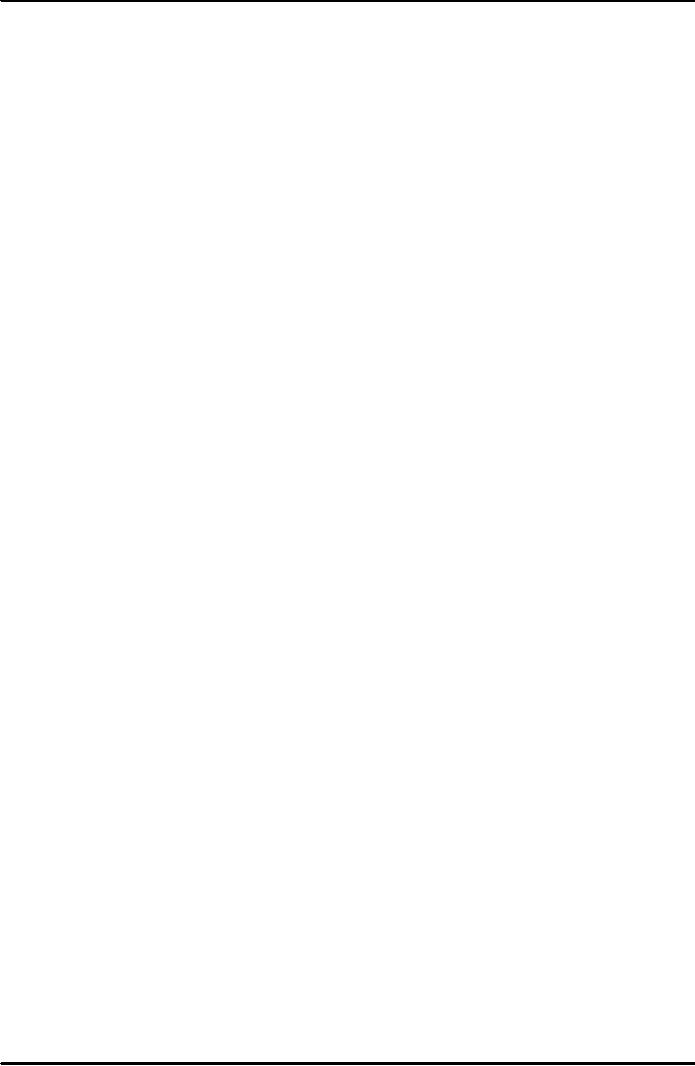
Introduction
to Economics ECO401
VU
Firms'
demand for labour will
shrink at the new higher
wage rate. The supply of
workers will rise
as
more workers would be
willing to work (and work
more hours) at the higher
wage rate. There
will
thus be unemployment (a surplus of
workers) at the minimum wage
set.
All
economies have black markets
in goods; whether this poses
a serious problem is
another
matter. What would be the
effect on black-market prices of a
rise in the
official
price?
Other
things being equal, there
would probably be a fall in
the black-market price. A
rise in the
official
price would cause an
increase in the quantity
supplied and a reduction in
the quantity
demanded
and hence less of a
shortage. There would
therefore be less demand for
black-
market
products.
Will
a system of low official
prices plus a black market
be more equitable or
less
equitable
than a system of free
markets?
More
equitable if the supplies at
official prices were
distributed fairly (e.g. by
some form of
rationing).
If, however, supplies were
allocated on a first-come, first-served
basis, then on
official
markets there would still be
inequity between those who
are lucky enough or queue
long
enough
to get the product and
those who do not get
it. Also, the rich
will still be able to get
the
product
on the black market!
Think
of some examples where the
price of a good or service is
kept below the
equilibrium
(e.g. rent controls). In
each case consider the
advantages and
disadvantages
of
the policy.
Two
examples are:
�
Rent
controls. Advantages: makes
cheap housing available to
those who would
otherwise
have
difficulty in affording reasonable
accommodation. Disadvantages:
causes a
reduction
in the supply of private
rented accommodation; causes
demand to exceed
supply
and thus some people
will be unable to find
accommodation.
�
Tickets
for a concert. Advantages:
allows the price to be
advertised in advance
and
guarantees
a full house; makes seats
available to those who could
not afford the
free-
market
price. Disadvantages: causes
queuing or seats being only
available to those
booking
well in advance.
Primary
and secondary schooling is
free in state schools in
most countries. If
parents
are
given a choice of schools
for their children, there
will be a shortage of places
at
popular
schools. What methods could
be used for dealing with
this shortage? What
are
their
relative merits?
Some
form of rationing (selection)
will have to be applied.
This could be done on the
basis of
ability.
If the objective is to have
schools that cater for
the full range of abilities,
then this
objective
will not be met. If the
objective is to recruit the
most able children, then
selection by
ability
is consistent with this
goal. An alternative is to select by
geographical location, with
the
students
living nearer to the school
being given preference over
those living further away.
This
is
the system used by most
state schools. It could well
disadvantage children with
particular
needs,
however, for whom the
school would be particularly
suitable. Other methods
include the
`sibling'
rule, whereby children who
have older brothers or
sisters already at the
school are given
preference.
This, however, could lead to
children living nearer the
school being deprived of
a
place.
Under
what circumstances would
making a product illegal (a)
cause a fall in its price;
(b)
cause
the quantity sold to fall to
zero.
a)
Where the shift in demand
was greater than the
shift in supply (perhaps
because of very
`law
abiding' consumers, or where
consumers faced harsher
penalties than
suppliers.
18
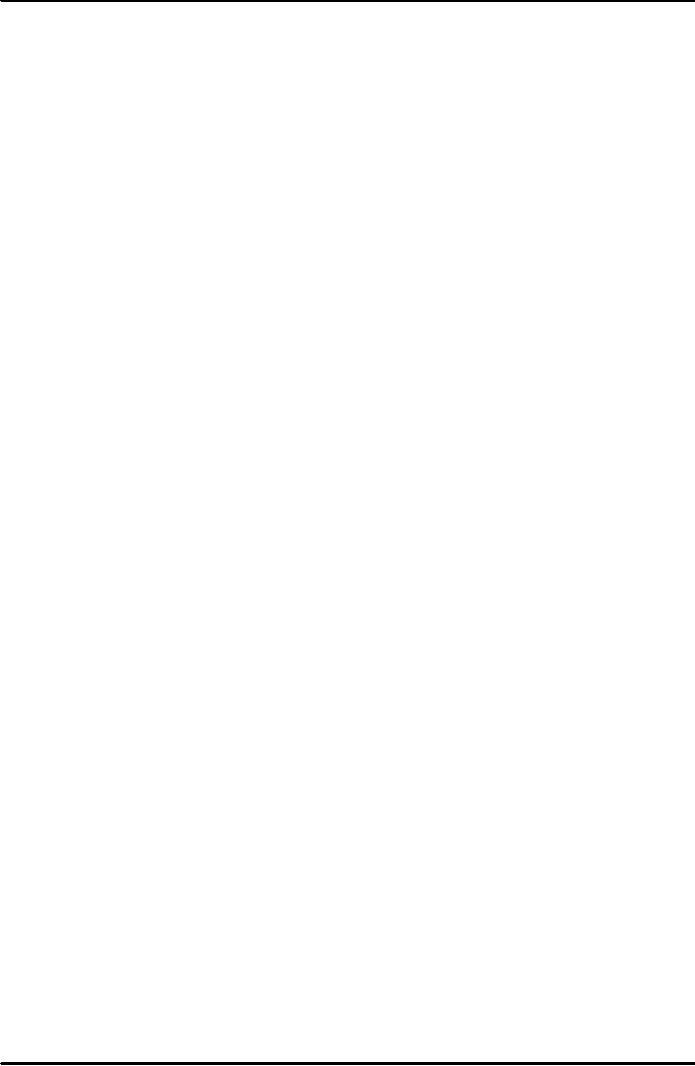
Introduction
to Economics ECO401
VU
b)
Where the penalties were
very harsh and the
law was strictly enforced,
and/or where
people
were very law
abiding.
19
Table of Contents:
- INTRODUCTION TO ECONOMICS:Economic Systems
- INTRODUCTION TO ECONOMICS (CONTINUED………):Opportunity Cost
- DEMAND, SUPPLY AND EQUILIBRIUM:Goods Market and Factors Market
- DEMAND, SUPPLY AND EQUILIBRIUM (CONTINUED……..)
- DEMAND, SUPPLY AND EQUILIBRIUM (CONTINUED……..):Equilibrium
- ELASTICITIES:Price Elasticity of Demand, Point Elasticity, Arc Elasticity
- ELASTICITIES (CONTINUED………….):Total revenue and Elasticity
- ELASTICITIES (CONTINUED………….):Short Run and Long Run, Incidence of Taxation
- BACKGROUND TO DEMAND/CONSUMPTION:CONSUMER BEHAVIOR
- BACKGROUND TO DEMAND/CONSUMPTION (CONTINUED…………….)
- BACKGROUND TO DEMAND/CONSUMPTION (CONTINUED…………….)The Indifference Curve Approach
- BACKGROUND TO DEMAND/CONSUMPTION (CONTINUED…………….):Normal Goods and Giffen Good
- BACKGROUND TO SUPPLY/COSTS:PRODUCTIVE THEORY
- BACKGROUND TO SUPPLY/COSTS (CONTINUED…………..):The Scale of Production
- BACKGROUND TO SUPPLY/COSTS (CONTINUED…………..):Isoquant
- BACKGROUND TO SUPPLY/COSTS (CONTINUED…………..):COSTS
- BACKGROUND TO SUPPLY/COSTS (CONTINUED…………..):REVENUES
- BACKGROUND TO SUPPLY/COSTS (CONTINUED…………..):PROFIT MAXIMISATION
- MARKET STRUCTURES:PERFECT COMPETITION, Allocative efficiency
- MARKET STRUCTURES (CONTINUED………..):MONOPOLY
- MARKET STRUCTURES (CONTINUED………..):PRICE DISCRIMINATION
- MARKET STRUCTURES (CONTINUED………..):OLIGOPOLY
- SELECTED ISSUES IN MICROECONOMICS:WELFARE ECONOMICS
- SELECTED ISSUES IN MICROECONOMICS (CONTINUED……………)
- INTRODUCTION TO MACROECONOMICS:Price Level and its Effects:
- INTRODUCTION TO MACROECONOMICS (CONTINUED………..)
- INTRODUCTION TO MACROECONOMICS (CONTINUED………..):The Monetarist School
- THE USE OF MACROECONOMIC DATA, AND THE DEFINITION AND ACCOUNTING OF NATIONAL INCOME
- THE USE OF MACROECONOMIC DATA, AND THE DEFINITION AND ACCOUNTING OF NATIONAL INCOME (CONTINUED……………..)
- MACROECONOMIC EQUILIBRIUM & VARIABLES; THE DETERMINATION OF EQUILIBRIUM INCOME
- MACROECONOMIC EQUILIBRIUM & VARIABLES; THE DETERMINATION OF EQUILIBRIUM INCOME (CONTINUED………..)
- MACROECONOMIC EQUILIBRIUM & VARIABLES; THE DETERMINATION OF EQUILIBRIUM INCOME (CONTINUED………..):The Accelerator
- THE FOUR BIG MACROECONOMIC ISSUES AND THEIR INTER-RELATIONSHIPS
- THE FOUR BIG MACROECONOMIC ISSUES AND THEIR INTER-RELATIONSHIPS (CONTINUED…….)
- THE FOUR BIG MACROECONOMIC ISSUES AND THEIR INTER-RELATIONSHIPS (CONTINUED…….):Causes of Inflation
- THE FOUR BIG MACROECONOMIC ISSUES AND THEIR INTER-RELATIONSHIPS (CONTINUED…….):BALANCE OF PAYMENTS
- THE FOUR BIG MACROECONOMIC ISSUES AND THEIR INTER-RELATIONSHIPS (CONTINUED…….):GROWTH
- THE FOUR BIG MACROECONOMIC ISSUES AND THEIR INTER-RELATIONSHIPS (CONTINUED…….):Land
- THE FOUR BIG MACROECONOMIC ISSUES AND THEIR INTER-RELATIONSHIPS (CONTINUED…….):Growth-inflation
- FISCAL POLICY AND TAXATION:Budget Deficit, Budget Surplus and Balanced Budget
- MONEY, CENTRAL BANKING AND MONETARY POLICY
- MONEY, CENTRAL BANKING AND MONETARY POLICY (CONTINUED…….)
- JOINT EQUILIBRIUM IN THE MONEY AND GOODS MARKETS: THE IS-LM FRAMEWORK
- AN INTRODUCTION TO INTERNATIONAL TRADE AND FINANCE
- PROBLEMS OF LOWER INCOME COUNTRIES:Poverty trap theories: